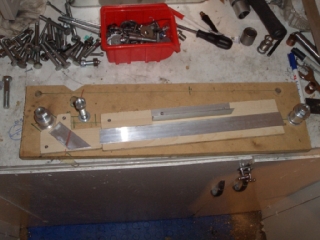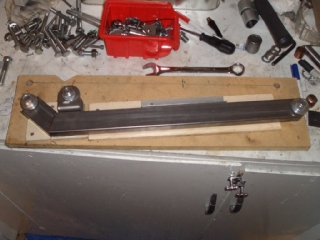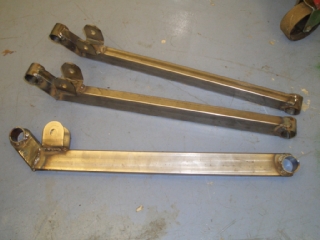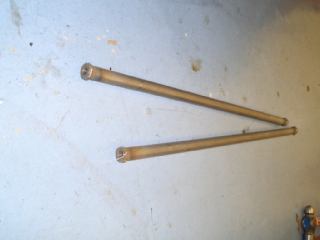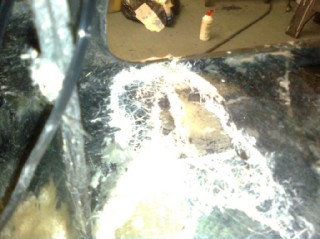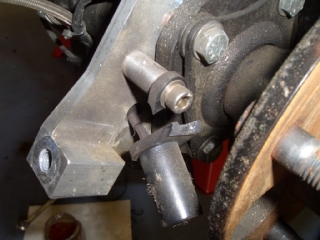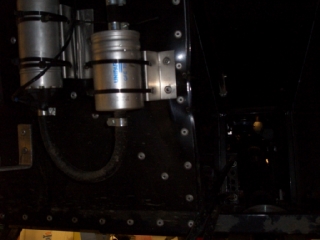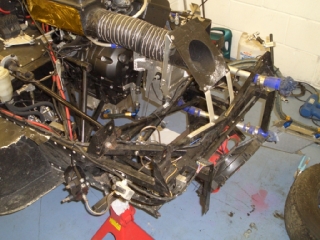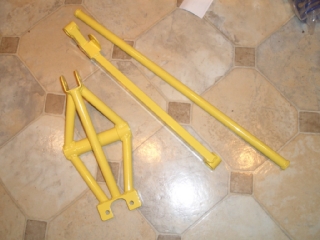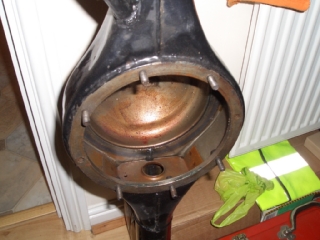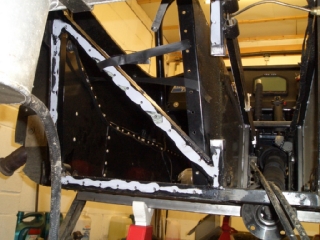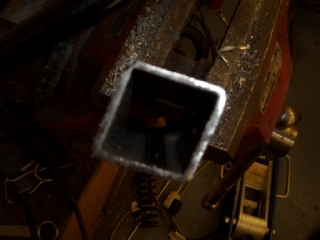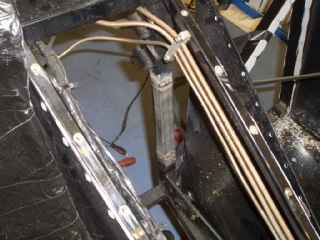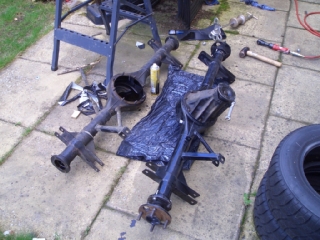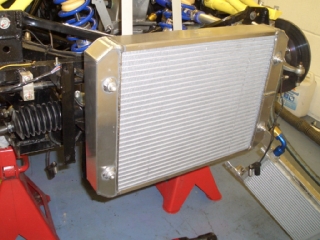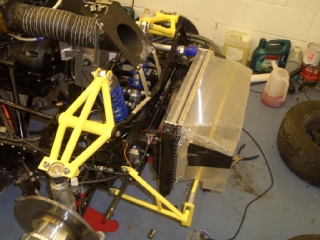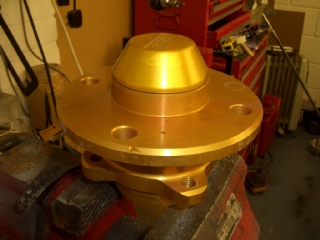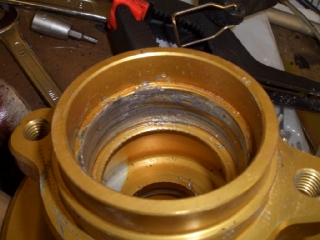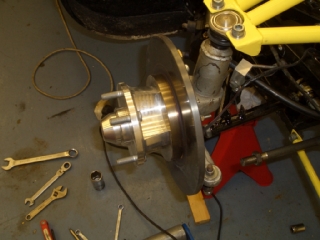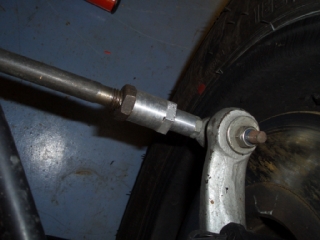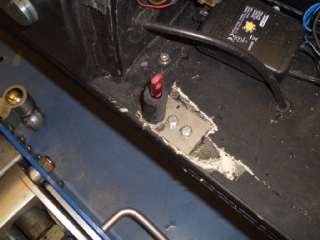Before I'd left for Silverstone the BBC and Met Office weather reports
had both said it was going to be dry over the weekend with sunny intervals. However, after the Allcomers race the
wind started to pick up, and the sky started to look ominously dark and foreboding. Just before the MR2 race -
two races before the RGB race - it started spitting with rain. Then it started raining more heavily. By the time
we were in the assembly area and the SaxMax race was underway it was raining good and proper. So, this was going
to be my third wet race, which was rather ominous since I'd managed to spin during both the two previous wet races
and come away with a non-operational car. RGB cars don't really work in the wet. It's not so much the engine, although
the high power-to-weight ratio doesn't help, so much as the tyres. With the light weight of the cars, and the light
treading of the AO48R tyres, it's impossible to get any heat into the tyres. In the Allcomers race I'd just got
into the 1:06s. In the wet RGB race I didn't get below 1:26. That's partially because I'm rubbish at racing in
the wet, but largely because there was simply no grip.
Because it was wet we were given a green flag lap before the race, although I'd managed to get the car well out
of shape just getting from the assembly area to the grid. Going round Luffield onto the grid I'd given the throttle
a gentle squeeze to see where the grip levels were at, and the back end had immediately stepped straight out. The
green flag lap seemed like a terrifying series of arm-twirling oversteer, locked brakes and spray.
Although I'd qualified pretty well, I was last by the time we reached the back straight. I was very tentative off
the start, backed off completely for the first corner, and then mimbled round Becketts and Maggotts at a speed
which would have had Miss Daisy complaining about being late. As usual, however, I started to work out where there
was grip (the braking zone for Brooklands, for example, and Copse) and where there wasn't (Luffield, Woodcote and
the strip of standing water down the middle of the National straight) and started to build up a little confidence.
I passed quite a few cars before having a big scare at Woodcote. In the dry Woodcote's not really a corner, it's
just a kink in the pit straight. You take it flat in an RGB car and can pretty much pick your line at will. In
the wet it's terrifying. It's not quite flat (not for me anyway) but the temptation is of course to squeeze the
throttle a bit harder to gain more speed down the pit straight. I squeezed just a bit too hard, the back stepped
out, and I found myself looking at the pit wall whilst going sideways at just under 80mph. I just about managed
to gather it up together and carry on my way, but started losing places once again because my confidence was completely
shot.
I then lost more time at Woodcote, although this time not because of anything I did. One of the three new drivers
in RGB at Silverstone was a chap called Robert Gardiner in a class C Raw Fulcrum. He'd got past me at the start,
I'd overtaken him before my big moment, but he'd subsequently got ahead again. Having got over my slide at Woodcote
I was starting to gain on Robert, but at Woodcote the back end of his car started sliding. And kept sliding. There
was another car to my left, so my options about which way to go were limited, and in any event it wasn't clear
at this stage when Robert's spin would stop and whether (as so often happens) the car would spear off in a different
direction once it regained traction and, if so, which direction. In the end Robert did the sensible thing and just
slithered to a half in a straight line with the wheels locked, and I nipped past between him and the pit wall.
Robert then got past me again, but I got him back on the start of the last lap. I got lapped by the first two cars
on the end of the last lap, and finished fourth last.
Not a great result, although it was a race full of incident and drama, which makes it all the more galling that
the Neuros stopped recording while we were waiting in the assembly area getting rained on. That's one of the problems
with not having a significant other at races - no-one to take your pitlane brolly off you when you go out onto
the track, hence no brolly. Ah well, back to Snett next. I'll try to wash the car before then... |
|
